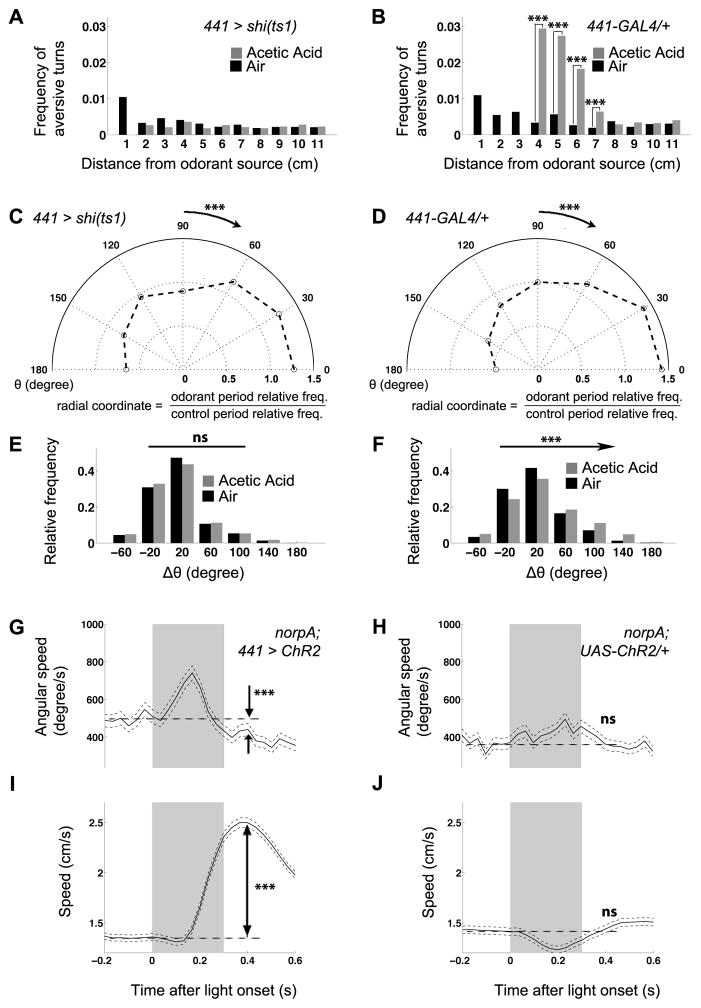Figure 4.
441-GAL4 defines neurons for the completion of aversive turns. (A, B) The enrichment of aversive turns in response to 10% acetic acid is abolished in 441 > shits1 (A) compared to 441-GAL4 (B) and UAS-shits1/+ (Figure 1F) controls. (C, D) The modulation of turn initiation, as measured by the distribution of θ upon turn initiation in the border area, still persists in 441 > shits1 (C, n = 2765 for the control period, and n = 3341 for the odorant period) compared to 441-GAL4/+ (D, n = 2552 for the control period, and n = 1897 for the odorant period) and UAS-shits1/+ (Figure 2A) controls. (E) Distribution of Δθ after turning, for events initiated when 441 > shits1 flies were moving towards the “odorant source” (red dot in Figure 1C) during the control (n = 1142) and aversive odorant (n = 1631) period. The modulation of direction is lost compared to 441-GAL4/+ (F) and UAS-shits1/+ (Figure 2C) controls. (G, H) Angular speed peaks during illumination and then falls below baseline level in 441 > ChR2 flies (G, n = 1016 before illumination, and n = 989 after illumination; same for speed) but not in control flies (H, n = 890 before illumination, and n = 852 after illumination; same for speed). (I, J) Speed increases after illumination in 441 > ChR2 (I) but not control (J) flies. Grey bar represents the light on period. A–B: same comparison as in the corresponding panels in Figures 1F and 1G; C–F: same comparison as in the corresponding panels in Figures 2A–2D: Wilcoxon tests between the average angular speeds (G, H) or speeds (I, J) before (−0.2s to −0.1s) and after (0.4 s) illumination, with the light onset being Time 0.

